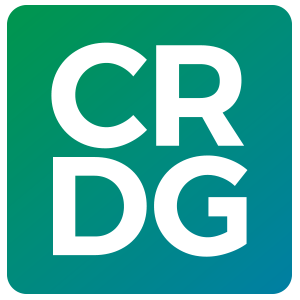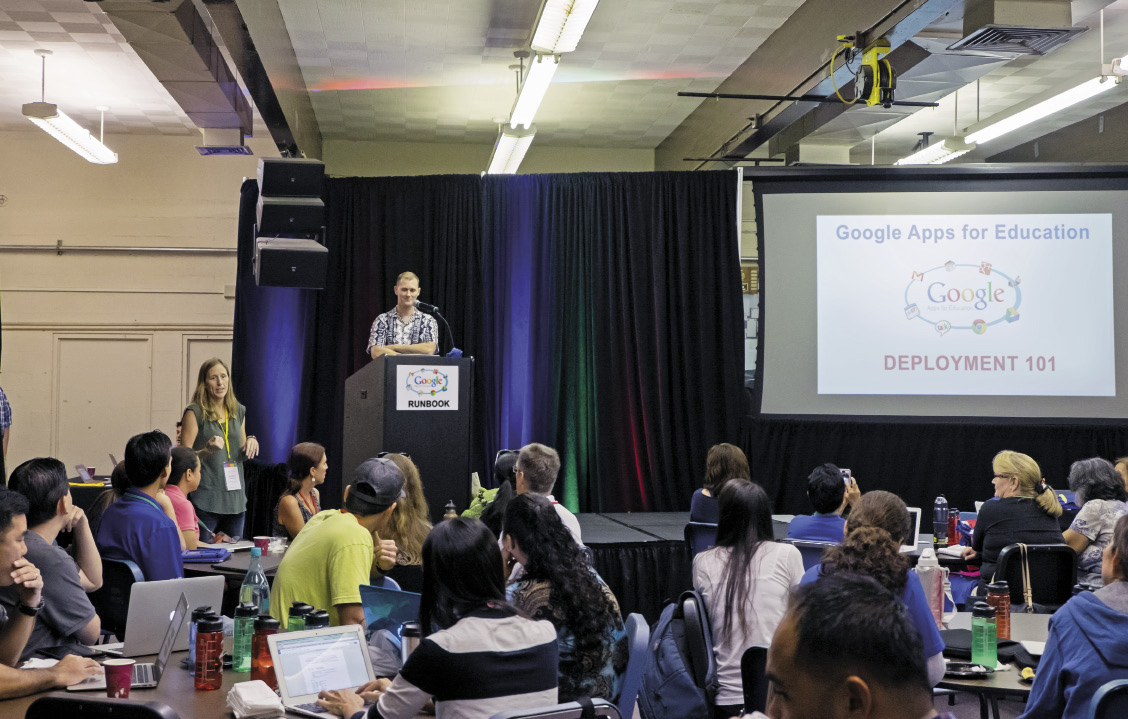24 Jul Supporting Deployment and Application of Technology in the HIDOE
Change management is not a term we often hear applied to education. In the domain of technology in the classroom and wider school environment, it is an essential piece of the puzzle for effective deployment of twenty-first century learning tools.
CRDG’s Information Technology (IT) and Learning Technologies (LT) teams have built up extensive knowledge in this area through both their research and their hands-on experience in supporting ULS’s Google Apps for Education and one-to-one computer programs (see p. 15). While they continue to work with ULS, their support role expanded this year to include work with the Hawai‘i Department of Education (HIDOE) in their one-to-one pilot program. The pilot began in eight schools: Kea‘au and Pāhoa elementary schools on Hawai‘i Island and Mililani Mauka, Mililani Waena, Nānāikapono, and Nānākuli elementary schools; Nānākuli Intermediate and High School; and Moanalua Middle School on O‘ahu. Principal Investigator Thanh Truc Nguyen, CRDG’s head of information technology Mark Yap, IT technician Robert Nakama, and evaluators George Harrison and Brian Lawton were joined by ULS’s Dean of Curriculum and Instruction Miki Tomita and several ULS teachers to implement the Academy for the 21st Century (ACE21) and Runbook projects. These two components of the work with the HIDOE leverage the ongoing research and specialized knowledge of the CRDG team.
The ACE21 program comprises a set of professional development courses that lead teachers, administrators, and technology coordinators through the process of implementing and managing a one-to-one technology program and working with Google Apps for Education (GAFE), a free cloud-based collaborative learning environment. The series of courses are delivered in a combination of face-to-face and online formats and focus on the hands-on details of setting up and administering a one-to-one program, beginning with Google 101, which looks at the seven features provided on the Google Drive. Following this introduction, courses go into classroom management and communication strategies, address standards in language arts and mathematics, and review and demonstrate strategies to encourage creativity and collaboration, and focus on Google Apps for administrators. The series wraps up with courses on digital citizenship and Internet safety. An online learning community provides ongoing opportunities for interaction and support through weekly forums as well as asynchronous discussion threads.
In conjunction with the ACE21 program, CRDG collaborated with ULS to develop the Runbook, a web-based publication that functions as a users manual for administrators and technology coordinators in setting up and working with GAFE. It covers the range of issues teachers and administrators face in setting up a new program, including setting up and maintaining a domain; rolling the program out to teachers, students, and parents; data portability; and trouble-shooting. In creating the Runbook, the team started with the acknowledgement that there is a wealth of information available on deploying and maintaining a Google Apps domain. Instead of trying to reinvent the wheel, they used the guide to bring that valuable content together into a one-stop resource and, more importantly, to introduce change management techniques and best practices that can help facilitate a safe and efficient deployment. They also focused on adapting existing best practices to the unique environment and strategic goals of the HIDOE.






